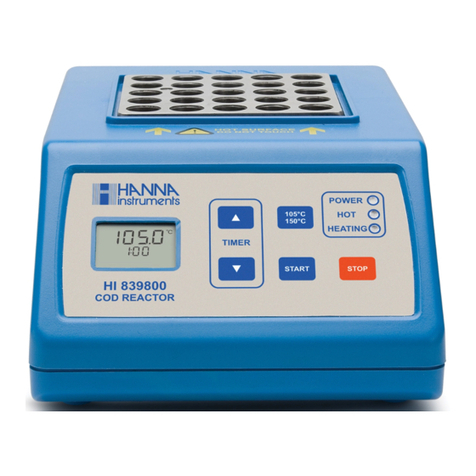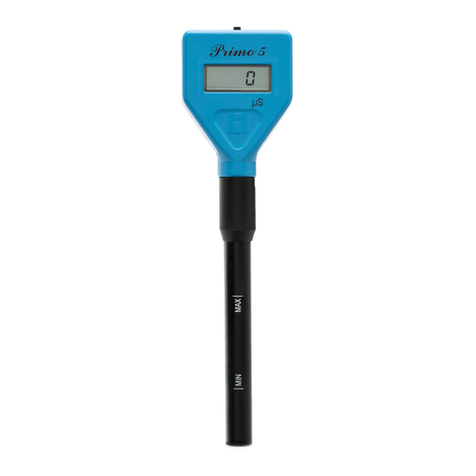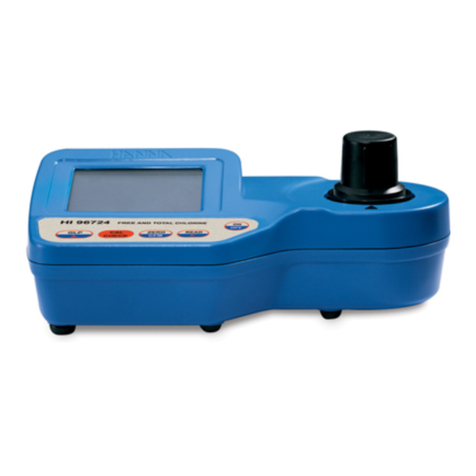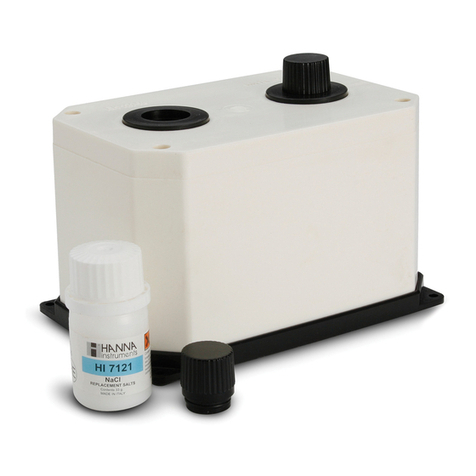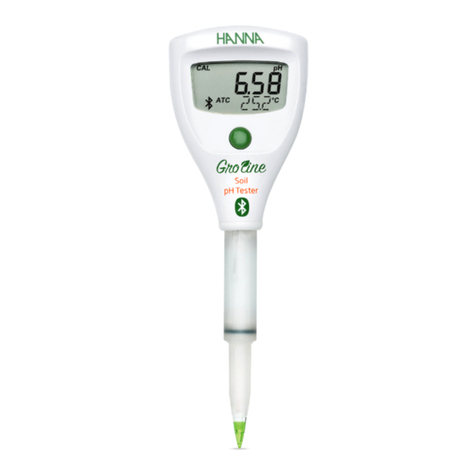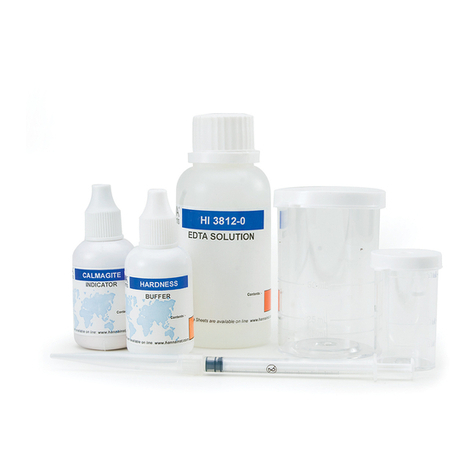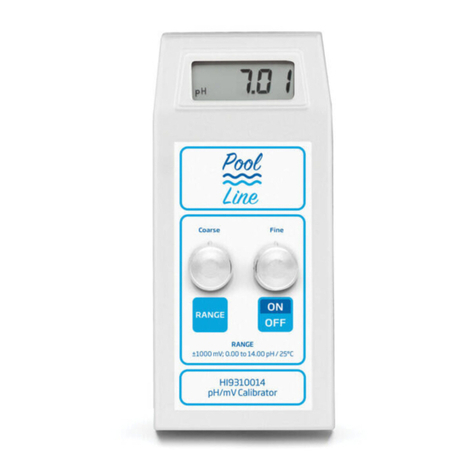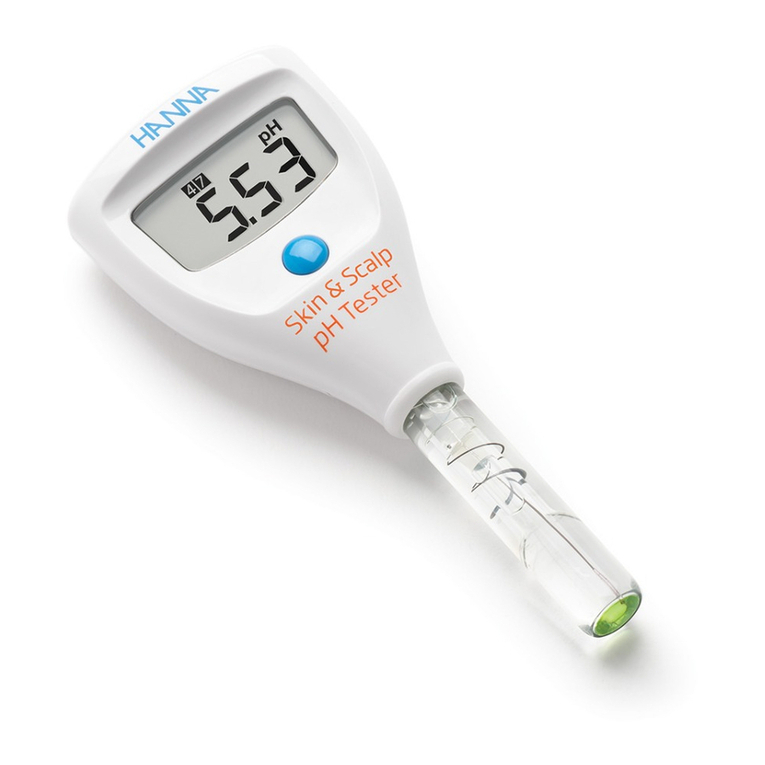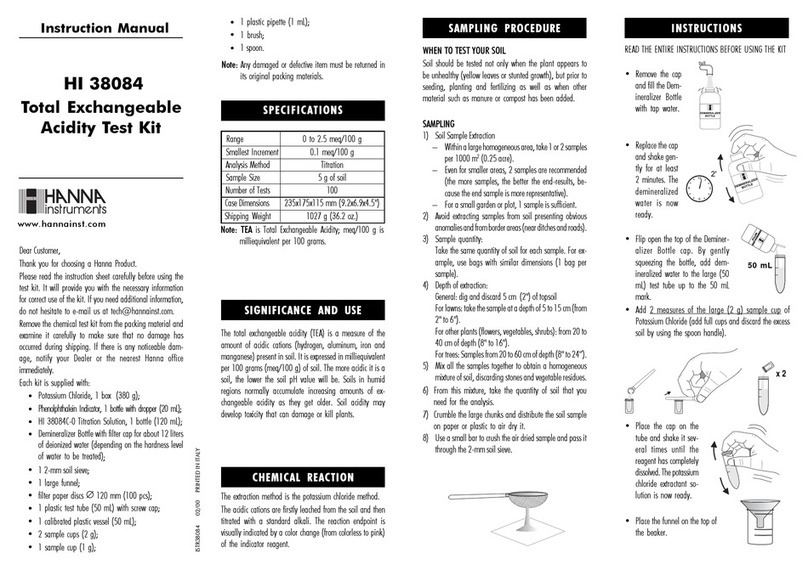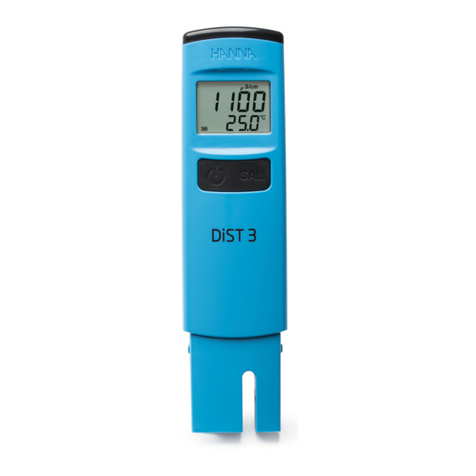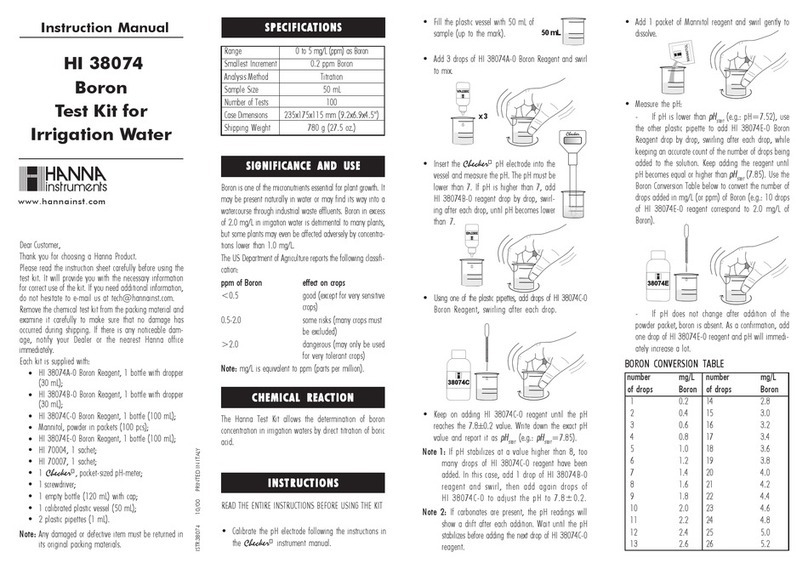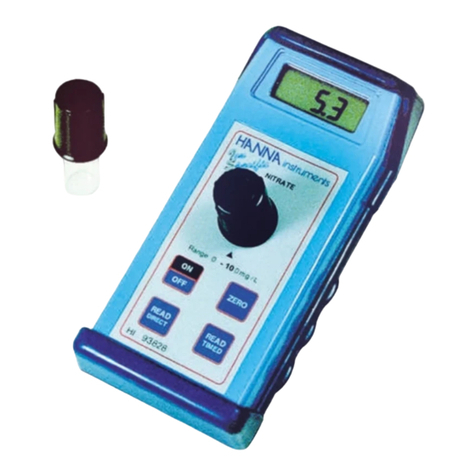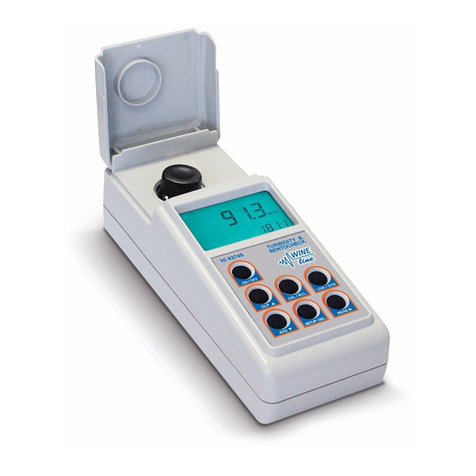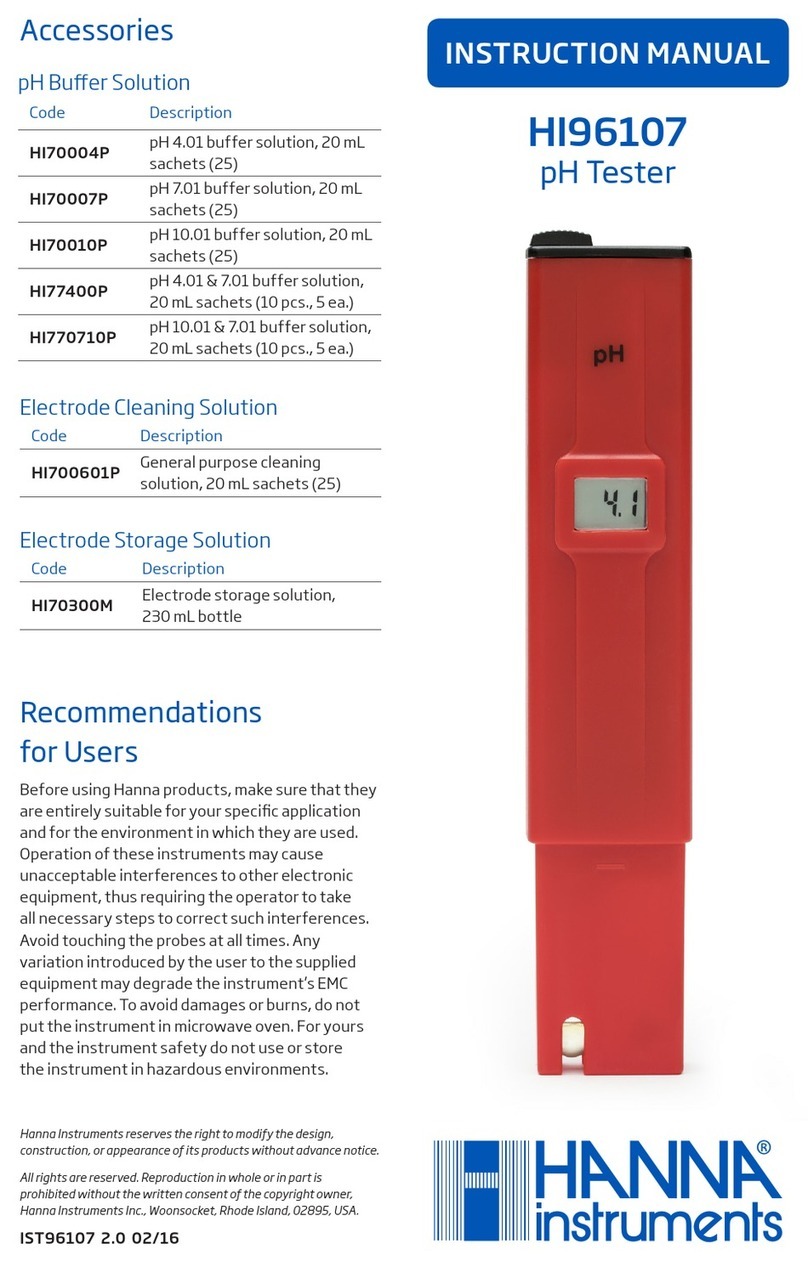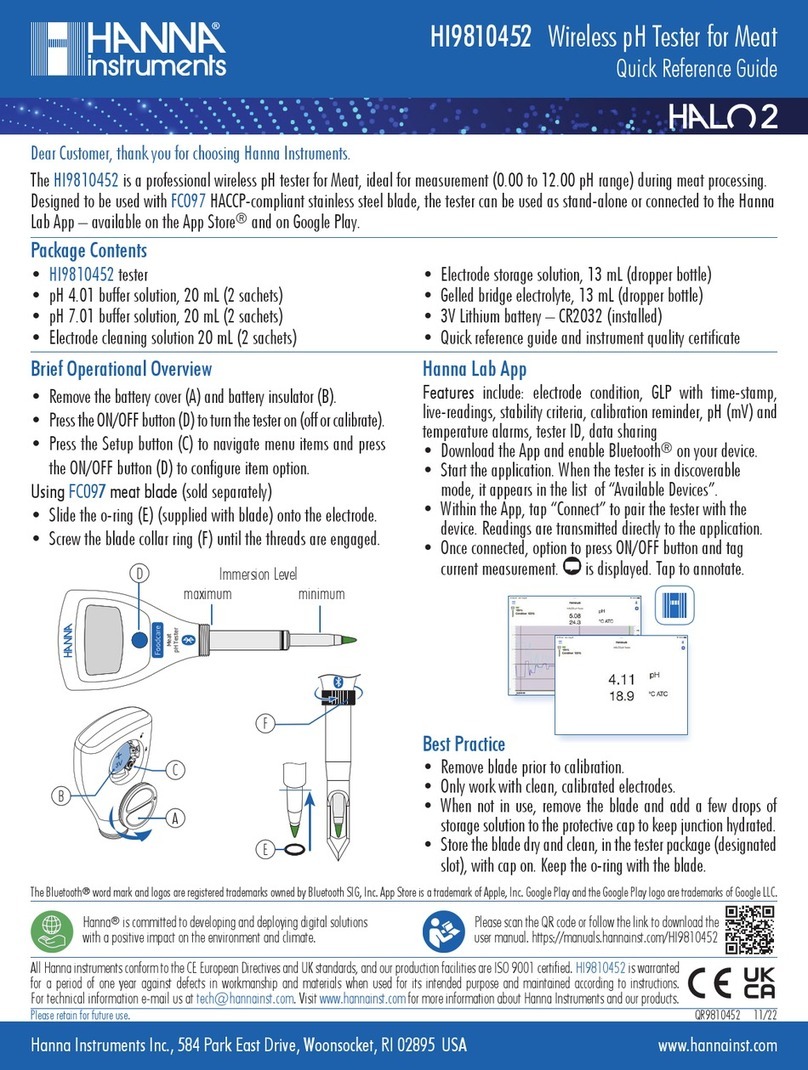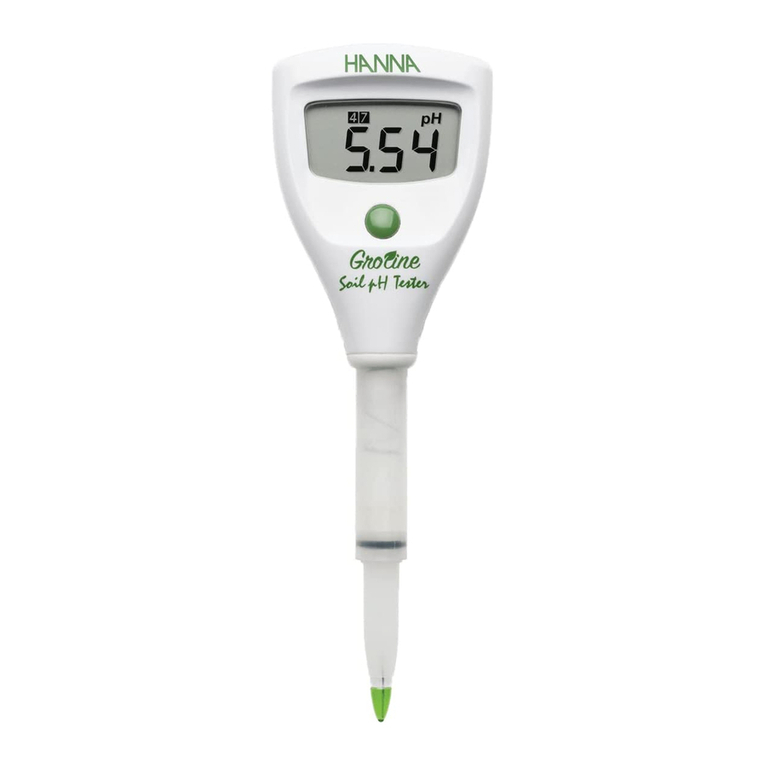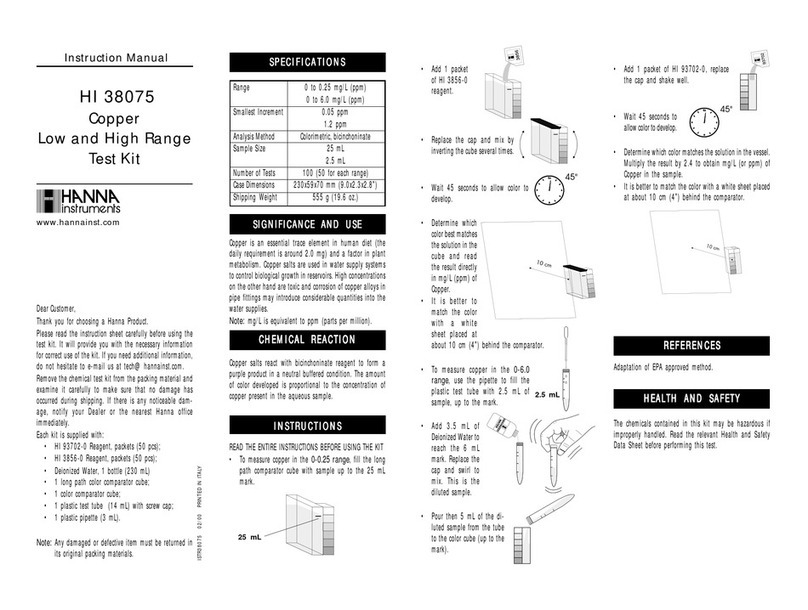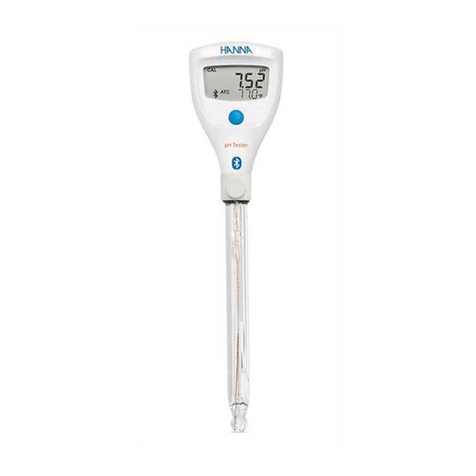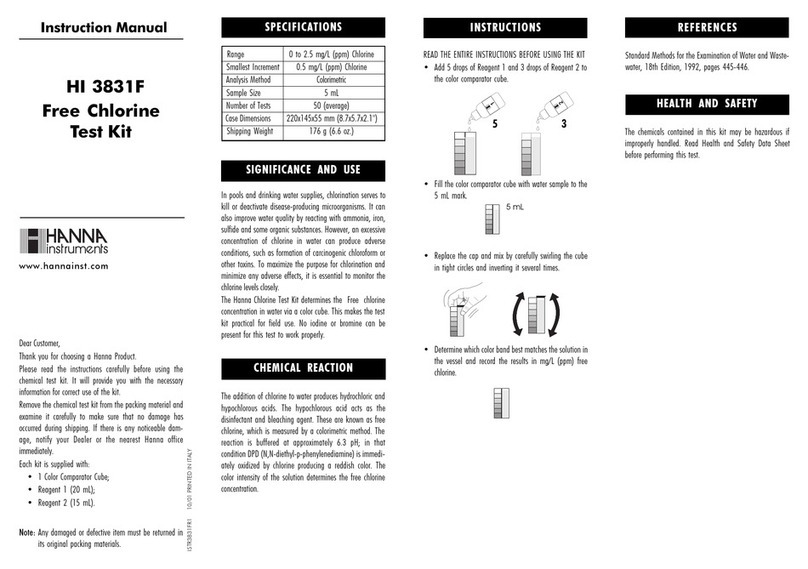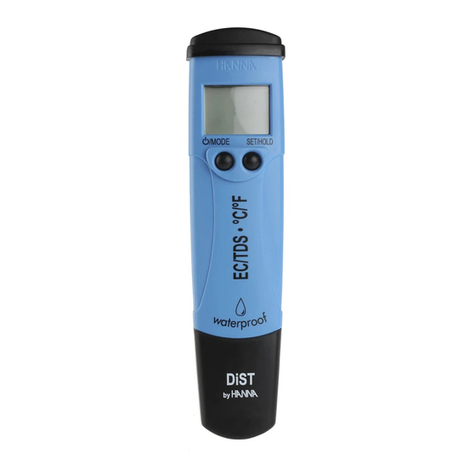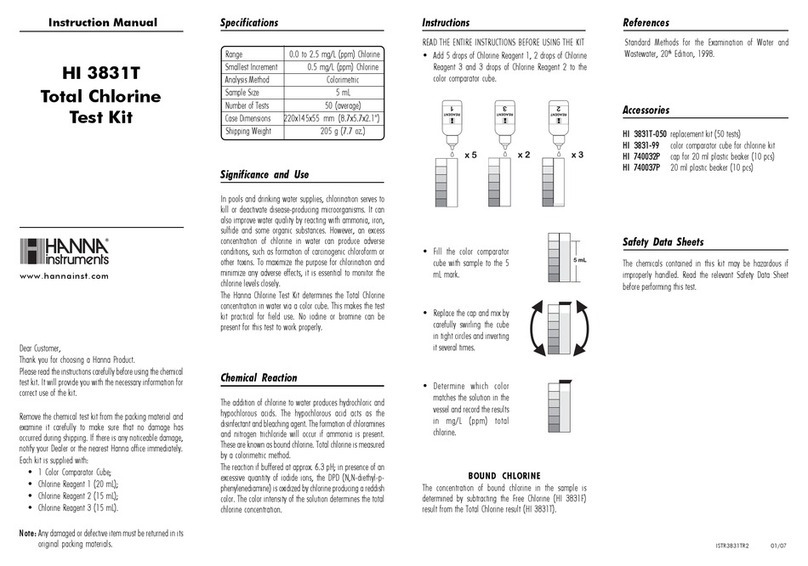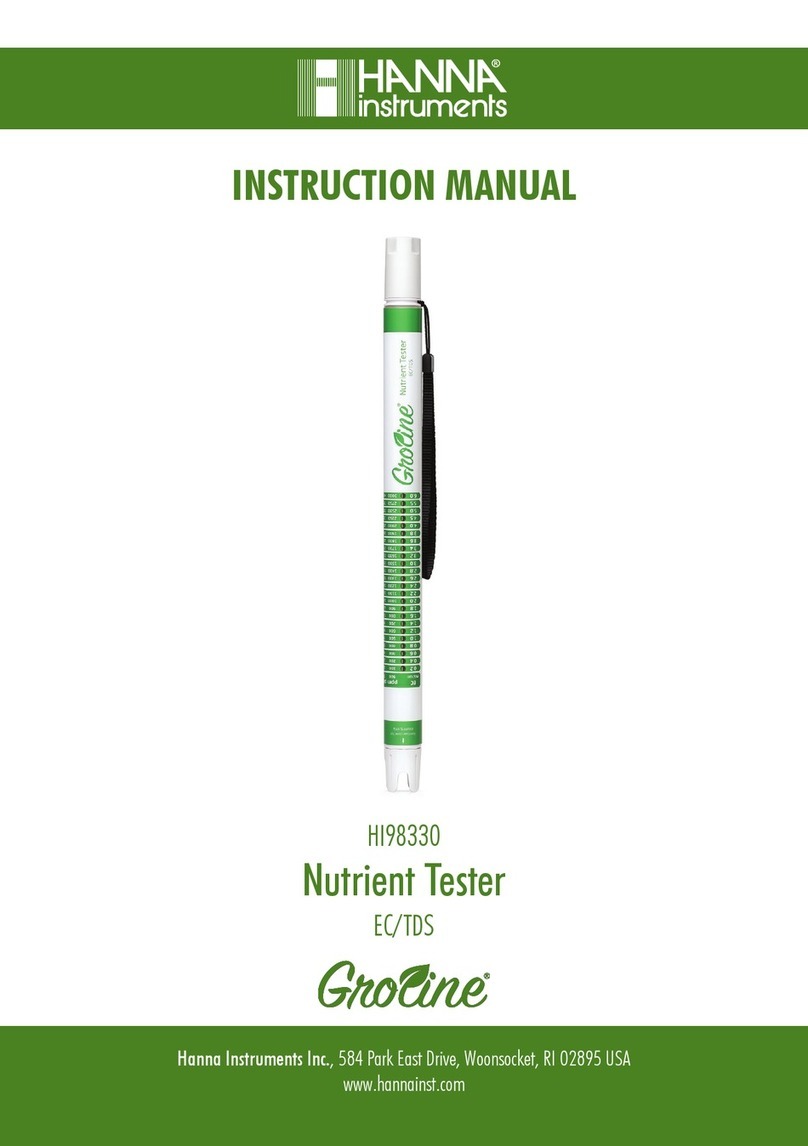Instruction Manual
HI 38082
Potassium
Test Kit for
Soil
www.hannainst.com
DearCustomer,
Thank you for choosing a Hanna Product.
Please read the instruction sheet carefully before using the
test kit. It will provide you with the necessary information
for correct use of the kit. If you need additional information,
Remove the chemical test kit from the packing material and
examine it carefully to make sure that no damage has
occurred during shipping. If there is any noticeable dam-
age, notify your Dealer or the nearest Hanna office
immediately.
Each kit is supplied with:
•Formaldehyde Solution, 4 bottles with dropper (4 x 25 mL);
•HI38082A-0AlkalineSolution,3bottles(3x100mL);
• HI 38082B-0 Potassium Reagent, packets (100 pcs);
• 1 long glass test tube (50 mL);
•1 calibrated plastic vessel (50 mL);
•1 long plastic pipette (1 mL);
• 1 plastic pipette (3 mL);
•1 syringe (1 mL) with tip;
• 1 spoon;
•1 graduated card;
• 1 point card.
Note: Any damaged or defective item must be returned in
its original packing materials.
ISTR38082 10/00 PRINTED IN ITALY
Potassium is present in tissues responsible for the growth of
plants (primary and secondary meristems). It plays an
important role in how much water is absorbed by the roots
and in the regulation of cellular activity. In addition,
potassium makes plants more resistant to diseases and
yields a positive effect on the color and fragrance in flowers.
The problem of lack of potassium is quite frequent in
calcareoussoils.
Note: mg/L is equivalent to ppm (parts per million).
SPECIFICATIONSSPECIFICATIONS
SPECIFICATIONSSPECIFICATIONS
SPECIFICATIONS
SIGNIFICANCE AND USESIGNIFICANCE AND USE
SIGNIFICANCE AND USESIGNIFICANCE AND USE
SIGNIFICANCE AND USE
CHEMICAL REACTIONCHEMICAL REACTION
CHEMICAL REACTIONCHEMICAL REACTION
CHEMICAL REACTION
READ THE ENTIRE INSTRUCTIONS BEFORE USING THE KIT
1- Obtain a Mehlich extract
from the soil sample by
performing the Mehlich
extraction.
2- Using the syringe, add
3 mL of soil extract to
the plastic vessel (a full
syringe contains 1 mL of
solution, hence repeat 3
INSTRUCTIONSINSTRUCTIONS
INSTRUCTIONSINSTRUCTIONS
INSTRUCTIONS
The Hanna Test Kit determines Potassium in soil via a
turbidimetric method. Potassium is precipitated in a basic
environment with sodium tetraphenylborate. The developed
turbidity is proportional to potassium concentration.
times). Add deionized water up
to the 25 mL mark.
3- Add 18 drops of Formaldehyde
Solution and swirl to mix.
4- Using the short plastic pipette, add 3 mL of HI 38082A-0
Alkaline Solution and swirl to mix.
5- Add1 packet of HI38082B-0
reagent and mix by means of
the spoon.
6- Waitfor 5min-
utes to allow
reactiontocom-
plete. If Potassium is present,
the solution will become tur-
bid.
7- Place the test tube on the
Point card and look from the
top of the tube at the black
spot on the Point card. Use
the long pipette to fill the
tube with the reacted sample
until the black spot completely
disappears.
Range 0 to 50 mg/L (ppm) as K
50 to 250 mg/L (ppm) as K
SmallestIncrement 5 mg/L [in the 0-50 mg/L range]
25 mg/L[inthe 50-250mg/Lrange]
AnalysisMethod Turbidimetric
Sample Size 3 mL and 0.6 mL
Number of Tests 100
CaseDimensions 235x175x115 mm (9.2x6.9x4.5")
Shipping Weight 889.0 g (31.3 oz.) 8- Hold the tube close to the Graduated
card as shown in the figure.
9- Read directly from the Graduated card
the concentration in mg/L (ppm) of po-
tassium that corresponds to the level of
the liquid in the test tube.
10-In case the black spot on the Point
card disappears when the liquid
level is under the 50 ppm mark,
the potassium concentration is
higher than 50 ppm. Dilute the
original sample and perform the
testas follows.
11-Usingthesyringe, addtotheplastic
vessel 0.6 mL of soil extract.
Note: To measure exactly 0.6 mL, take
thesyringe andpushthe plunger
completelydownintothesyringe.
Insert tip into the extract and
pull the plunger out until the
lower edge of the seal is on the
0.0 mL mark of the syringe.
Insert the syringe into the vessel
and push the sample out until
the lower edge of the seal is on
the 0.6 mL mark.
x18
3 mL
0.6 mL
3 mL
25 mL
